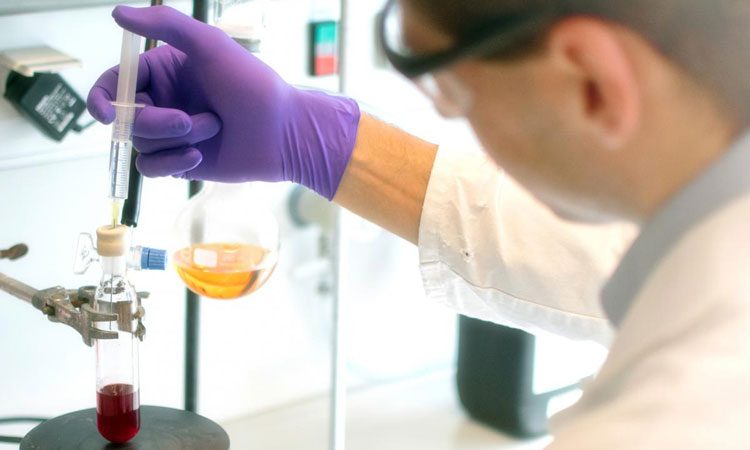Method developed for quicker and simpler production of lipidated proteins
Posted: 16 October 2019 | Rachael Harper (Drug Target Review) | No comments yet
A simple and direct method of introducing lipids into protein has been developed using palladium as a catalyst.


Researchers from Graz University of Technology and University of Vienna present a new method for the production of lipid proteins. Compared to established methods, this method impresses with its simplicity in implementation and its flexibility in application (credit:TU Graz/ORGC).
Rolf Breinbauer from TU Graz’s Institute of Organic Chemistry and Christian Becker from the Institute of Biological Chemistry at the University of Vienna, Austria, have developed a simple and direct method of introducing lipids into protein using the noble metal palladium as a catalyst for attaching lipids to proteins.
According to the researchers, their method could be used to improve the production and design of pharmaceuticals.
BIPHEPHOS a type of ligand, plays a crucial role in the process, explains Breinbauer: “We tested a total of 50 different ligands. BIPHEPHOS was kind of the ‘missing link’. It has the selectivity needed for palladium to facilitate the lipidation of the sulphurous amino acid cysteine.”
Protein chemist Christian Becker applied what they had learned to proteins, with equally successful results: “The outstanding selectivity of the new catalyst and the robust reaction facilitate the rapid modification of numerous cysteine-containing peptides and proteins for use in biomedical research.”
Decorating proteins with pharmaceuticals and other molecules for targeted delivery into the body and for keeping them active is a commonly used approach. The method developed by Breinbauer and Becker could now be used to accurately and efficiently introduce such molecules into proteins. Breinbauer is confident that their method will soon be adopted, as “the reagents we used are very easy to manufacture or can be purchased”.
The study was published in the Journal of the American Chemical Society (JACS).
Related topics
Ligands, Lipids, Protein, Research & Development, Targets
Related people
Christian Becker, Rolf Breinbauer








